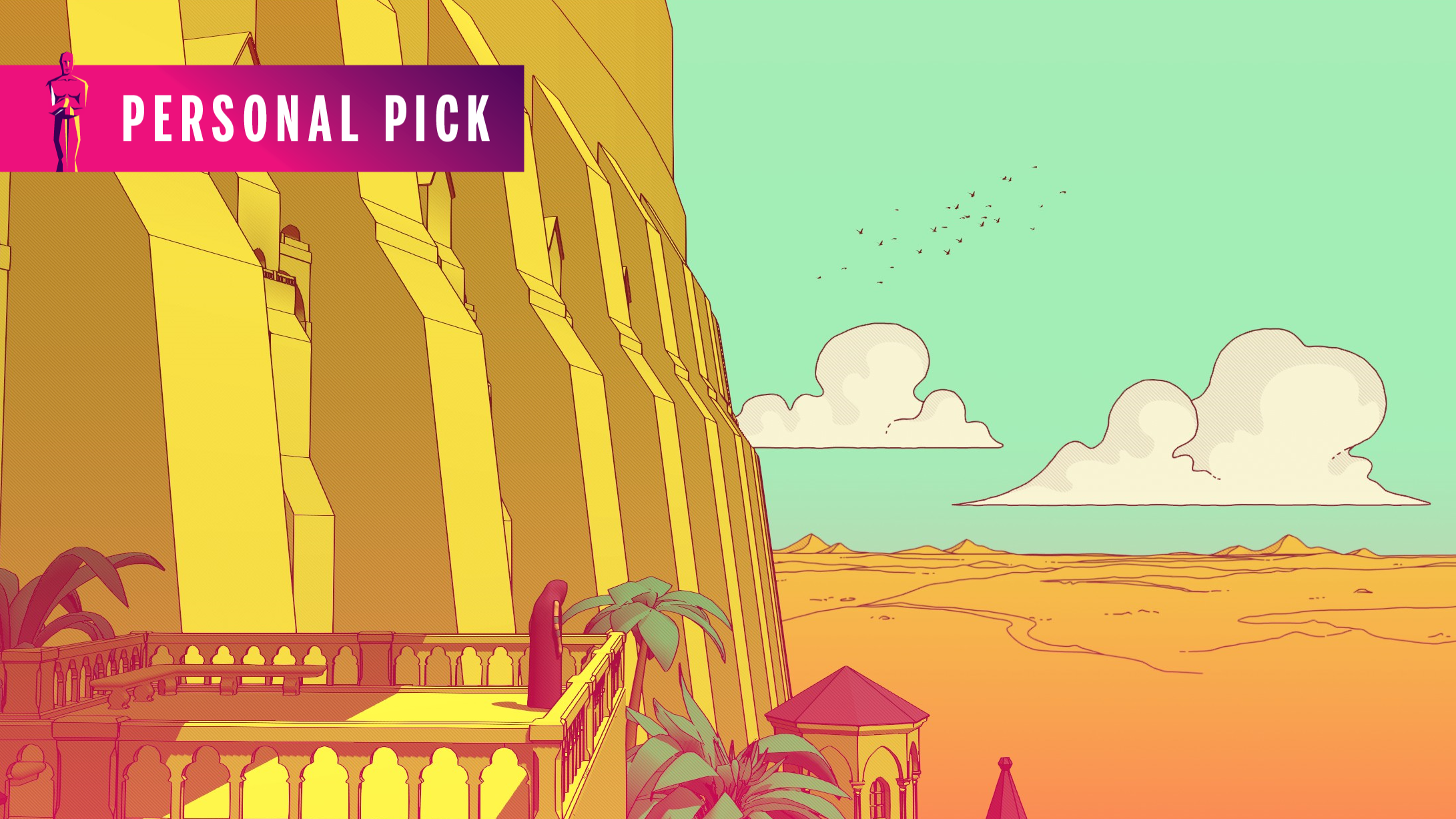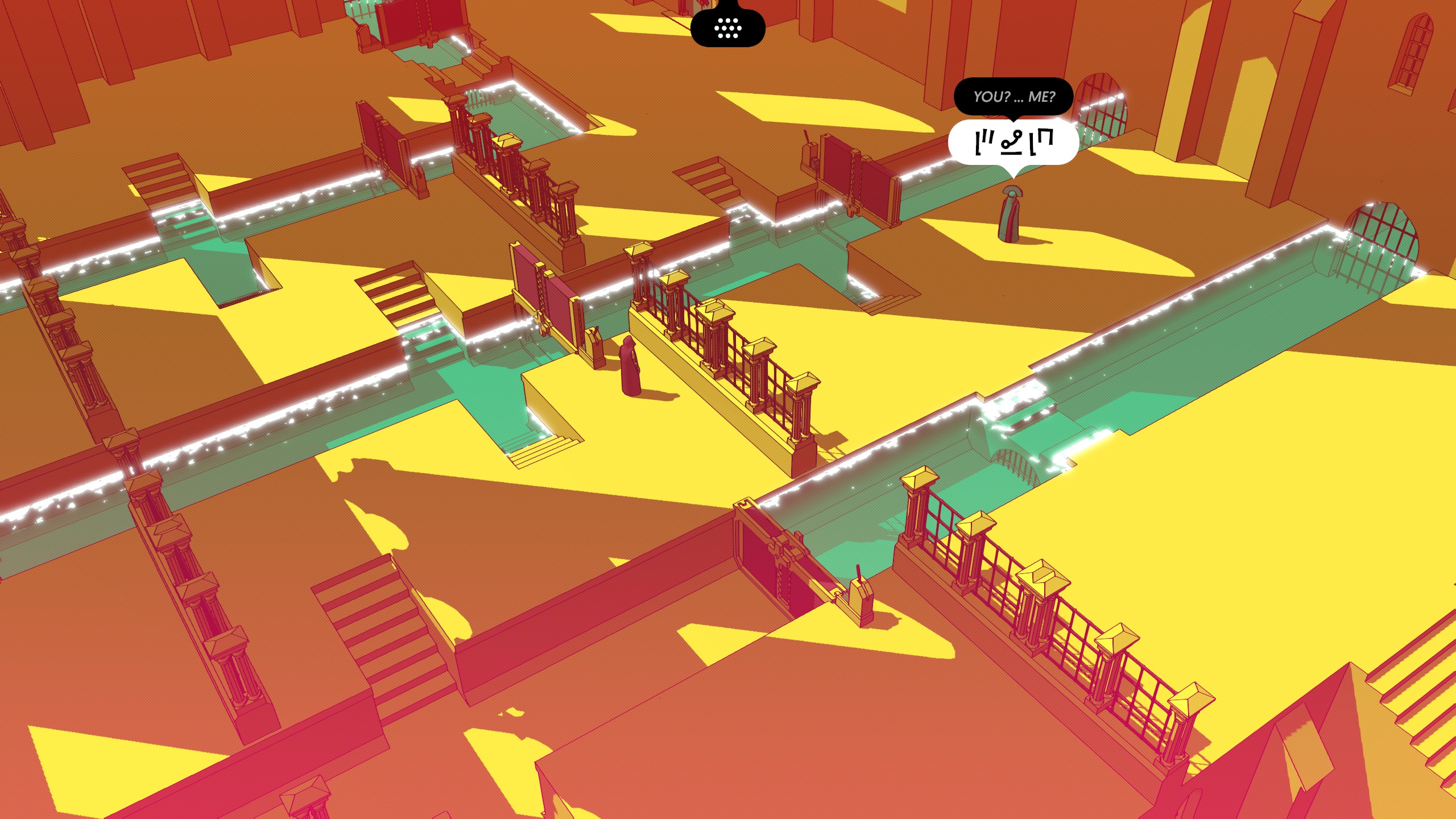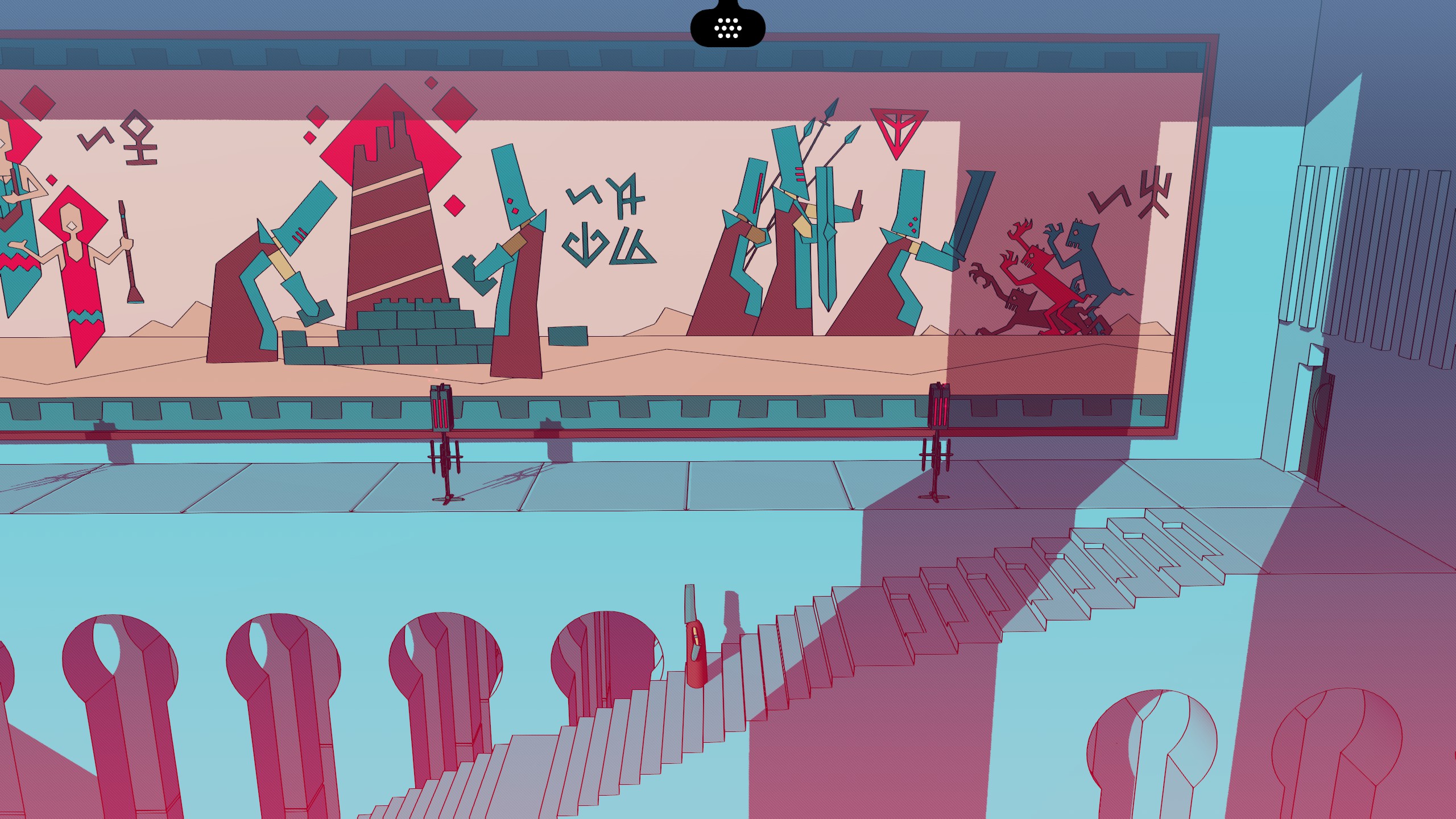Chants of Sennaar made me feel like a child in a school computer lab again in the best way
I may not have learned a real language, but this was still the best learning-adjacent game I've played in years.

Nothing about Chants of Sennaar says "nostalgia" at first glance. It's a puzzle adventure game with an on-trend art style of high contrast, bright colors, and beautiful lighting and water effects. But it's taken me back to the '90s more effectively than any self-styled "retro" game in years.

In addition to our main Game of the Year Awards 2023, each member of the PC Gamer team is shining a spotlight on a game they loved this year. We'll post new personal picks, alongside our main awards, throughout the rest of the month.
Instead of looking the part, Chants of Sennaar has made me feel like a kid again, eking out my play sessions over a month as if I'm a grade schooler waiting for my weekly computer lab visit, literally giddy with excitement about solving each of its vocabulary-based riddles.
Sennaar is all about language. Each level of the giant tower I've awoken in is inhabited by a different group of people with their own culture and, importantly, language. One language is harsh and angular looking, another appears inspired by Arabic, and yet another reminds me of Doctor Who's circular Gallifreyan symbols. They've all forgotten how to talk to one another and it's up to me, armed with my wits and a notebook, to untangle the knots of each language by immersing myself in classic adventure game puzzles.

In an early puzzle, a character stands on the other side of a water lock, pointing to a lever nearby while giving instructions in a language I can't understand, noted by the "..." when I mouse over their speech bubbles. But I can tell they want me to help as they gesture to themself and speak again before they return the favor. As I explore, I build myself a phrasebook to fully translate the language of each group. Their symbols are all around me: characters gesturing and talking to one another, murals of religious significance, plaques on statues, board games, and shop signs.
The symbols I encounter are logged in my notebook. I can type in my guesses for each as I explore, and those theories show up as an attempted translation for every bit of text I mouse over in the world. "Chosen becomes scared/dizzy?" reads my attempted translation of three symbols below a music box play where a character holds their chest and a starburst surrounds their head.

As I progress, my character doodles sketches for objects and concepts: a bottle, a crate, a person holding up one hand and shaking a finger, an arrow pointing up a flight of stairs. If I can correctly match the four or so sketches on a page with corresponding symbols, their meanings are locked in and confirmed, appearing as fully translated when I mouse over them out in the wild.
Chants of Sennaar is a masterful deployment of this hiding peas in mashed potatoes method of learning.
It's difficult to praise the full cleverness of Sennaar's puzzles without spoiling them, but they constantly delight me. In each area I dig for the thread I need to pull that will begin unspooling the feat of translation before me. Often I type in two possible meanings for a symbol, walking back and forth through the different areas of a level looking for some clue to its true meaning.
Keep up to date with the most important stories and the best deals, as picked by the PC Gamer team.
Finally I uncover some bit of dialogue I missed, or a scrawled note in a book, and the same symbol in a new context secures its true meaning in my mind. It's never a chore when the vocabulary lessons are all grounded in practical application. There are lever sequence puzzles and stealth sections and even a few tricky number puzzles towards the end.
Occasionally I find myself stuck on a concept that's not well-illustrated by the notebook sketch prompts. I do brute force through a page of translations at least once by noting the symbols I definitely know and trading in all my options for the last until I find the correct one. Most often though, I eventually stumble upon the clue I need to seal in a solution.

Securing one word brings sudden clarity to a sign meant to direct me through a maze where I find a hidden tool that will help me decode the puzzles in another area. I'm thrilled when I encounter a new language and realize that its syntax is different from the two I'd seen before, ordering sentences Yoda-style with object nouns preceding verbs and then subject nouns. Another language is more pictographic than others, helping me guess new words by understanding the two symbols it combines.
By the end, I've completed translations for five languages spoken by the inhabitants of Sennaar's tower. And if I've done everything right, teaching myself to talk with them all will have brought each culture closer to its neighbors too.
Back to the learning lab

At the risk of going full "only '90s kids remember" there was a period of time in the '90s and early '00s where public library computers and elementary school computer labs were a fixture of the suburban school experience, at least here in the States. A weekly visit to the school lab was a treasured time. We'd get an hour break from grammar diagrams to sit in a room crammed with giant CRT monitors and desktop computers installed with the likes of Zoombinis, Oregon Trail, and Carmen Sandiego. Most of these edutainment games of the era weren't strictly learning games full of multiplication tables or history quizzes. We were absolutely learning though, stretching our critical thinking skills and problem solving, and we loved every minute of it.
Chants of Sennaar is a masterful deployment of this hiding peas in mashed potatoes method of learning. It isn't teaching me any real language, but it's managing to train my brain with a pleasant little exercise routine not unlike what I expect everyone was feeling when Wordle first kicked off. Even though our relationship to digital learning has drastically changed in 20 years, these sneaky learning experiences can still be found in the modern puzzle game genre and Sennaar is the finest of the form I've played in a while.

Lauren has been writing for PC Gamer since she went hunting for the cryptid Dark Souls fashion police in 2017. She accepted her role as Associate Editor in 2021, now serving as self-appointed chief cozy games and farmlife sim enjoyer. Her career originally began in game development and she remains fascinated by how games tick in the modding and speedrunning scenes. She likes long fantasy books, longer RPGs, can't stop playing co-op survival crafting games, and has spent a number of hours she refuses to count building houses in The Sims games for over 20 years.

